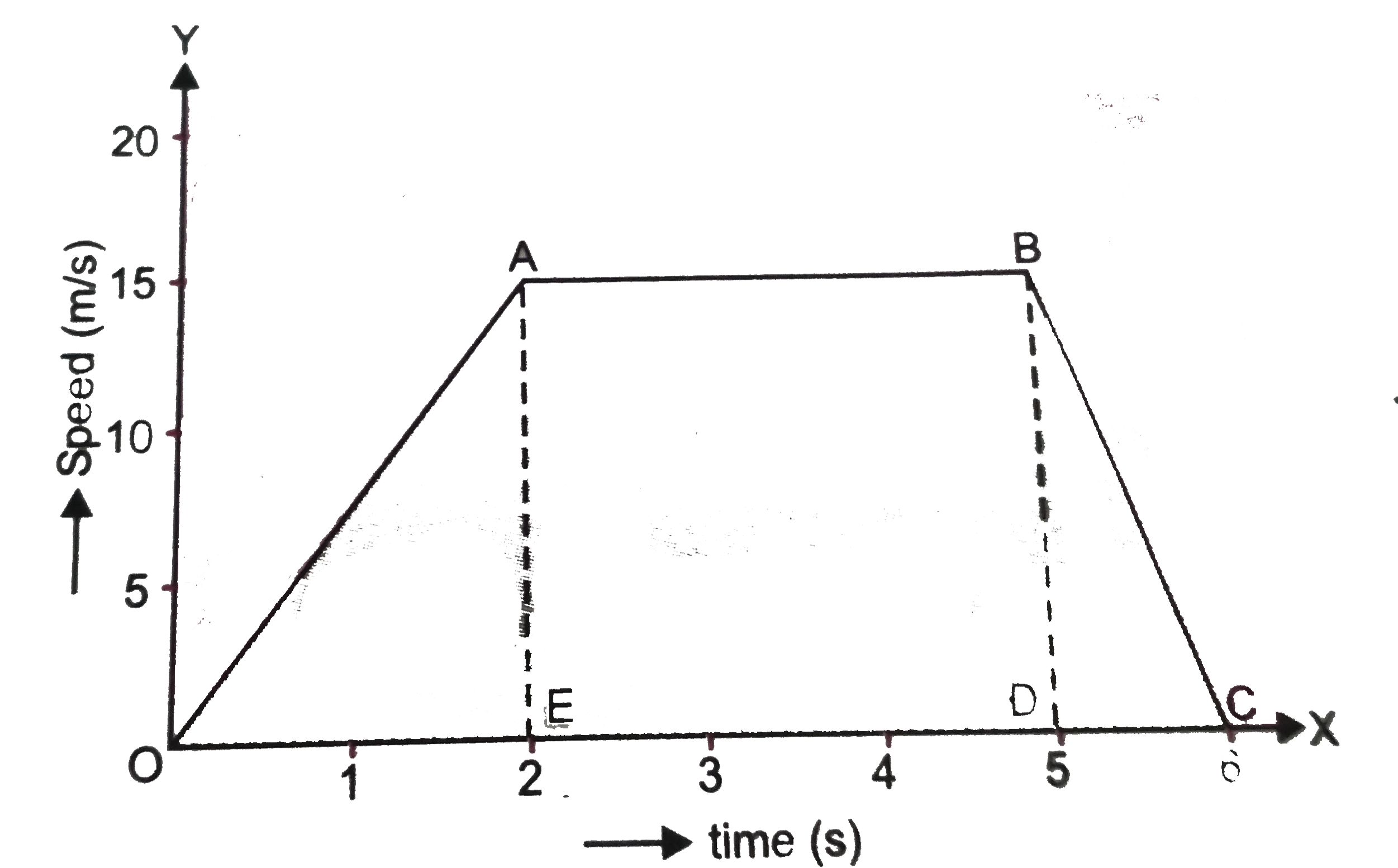The distance travelled by a motor car in t seconds after the brakes are applied is s feet where s=22t−12t2. The distance travelled by the car before it stops, is
10.08ft
10ft
11ft
11.5ft
The correct Answer is:A
To find the distance travelled by the motor car before it stops, we start with the given equation for distance:
s=22t−12t2
Step 1: Find the velocity
The velocity v of the car is given by the derivative of the distance s with respect to time t:
v=dsdt=ddt(22t−12t2)
Calculating the derivative:
v=22−24t
Step 2: Set the velocity to zero to find the time when the car stops
To find when the car stops, we set the velocity v to zero:
22−24t=0
Solving for t:
24t=22
t=2224=1112 seconds
Step 3: Substitute t back into the distance equation
Now, we substitute t=1112 back into the distance equation to find the total distance travelled before the car stops:
s=22(1112)−12(1112)2
Calculating each term:
1. First term:
22×1112=24212
2. Second term:
12×(1112)2=12×121144=1452144=12112
Step 4: Combine the results
Now we combine the two terms:
s=24212−12112=12112 feet
Thus, the distance travelled by the car before it stops is:
12112 feet
The velocity v of the car is given by the derivative of the distance s with respect to time t:
To find when the car stops, we set the velocity v to zero:
Now, we substitute t=1112 back into the distance equation to find the total distance travelled before the car stops:
22×1112=24212
12×(1112)2=12×121144=1452144=12112
Now we combine the two terms:
Topper's Solved these Questions
- BOOK - MHTCET PREVIOUS YEAR PAPERS AND PRACTICE PAPERSCHAPTER - APPLICATIONS OF DERIVATIVESEXERCISE - MISCELLANEOUS PROBLEMS80videos
APPLICATIONS OF DERIVATIVES
- BOOK - MHTCET PREVIOUS YEAR PAPERS AND PRACTICE PAPERSCHAPTER - APPLICATIONS OF DERIVATIVESEXERCISE - MHT CET CORNER21videos
APPLICATIONS OF DERIVATIVES
- BOOK - MHTCET PREVIOUS YEAR PAPERS AND PRACTICE PAPERSCHAPTER - APPLICATIONS OF DEFINITE INTEGRALS EXERCISE - MHT CET Corner6videos
APPLICATIONS OF DEFINITE INTEGRALS
- BOOK - MHTCET PREVIOUS YEAR PAPERS AND PRACTICE PAPERSCHAPTER - BINOMIAL DISTRIBUTIONEXERCISE - MHT CET Corner6videos
BINOMIAL DISTRIBUTION
Similar Questions
A car is moving with constant speed 15m/s. Suddenly the driver sees an obstruction on the road and takes 0.40s to apply the brake, the brake causes a deceleration of 5m/s2. Find the distance traveled by the car before it stops.
View SolutionThe speed- time graph of a car is given in (figure) The car weights 1000kg
(a) What is the distance travelled by the car in first two seconds?
(b) What is the braking force applied at the end of 5seconds to bring the car to a stop within one second?
 View Solution
View Solution
Knowledge Check
- Question 1 - Select One
The distance travelled by a motor car in t second after the brakes are applied is a feet, where s = 22t −12t2.
A10.08 ftB10 ftC11 ftD11.5 ft - Question 2 - Select One
If S=16+(192)t−t3, then distance travelled by the particle before coming to rest is
A1040 unitsB520 unitsC260 unitsD2080 units - Question 3 - Select One
The distance x travelled by the car in above problem in time t is given by -
Ax=t22(αβα−β)Bx=t2(αβα+β)Cx=t2(α+βα−β)Dx=t22(αβα+β)
The speed- time graph of a car is given in (figure) The car weights 1000kg
(a) What is the distance travelled by the car in first two seconds?
(b) What is the braking force applied at the end of 5seconds to bring the car to a stop within one second?
 View Solution
View SolutionFind the distance travelled by a car with speed 22.5 m/s in 50 min
View SolutionA car travels at a speed of 75 m/s. for 2 hours. What is the distance (in km) travelled by the car?
View SolutionA car travels at a speed of 25 m/s for 8 hours. What is the distance (in km) travelled by the car?
View SolutionA car travels at a speed of 50 m/s. for 5 hours. What is the distance (in km) travelled by the car?
View Solution

